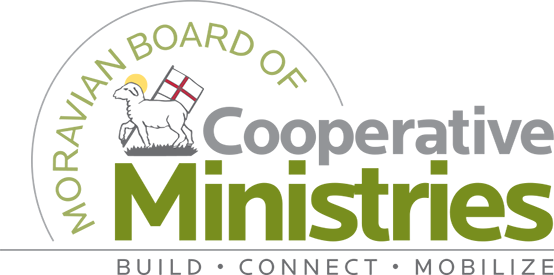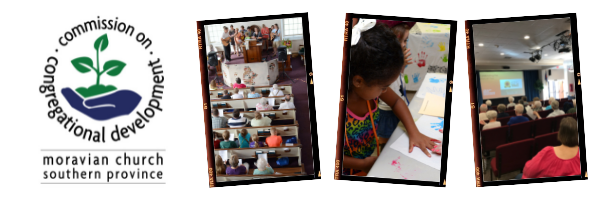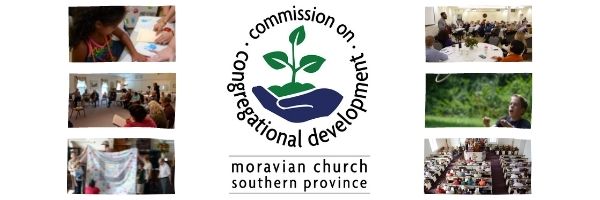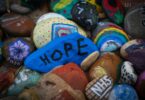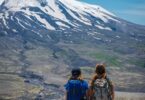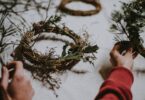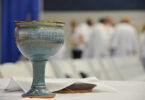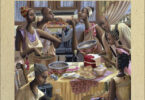 BY WILLIAM NEEDS |
BY WILLIAM NEEDS |
Note: This is part of a monthly blog series, “Coffee with Moravian Ancestors.” Bill sits down with important figures in the Moravian church to have a cup of (Moravian) coffee, asking questions about his or her life and how they have impacted the church! Look for Bill’s other blog posts here. To accompany his blog posts, he has drawn the images from his trip to Europe on the Roots of the Moravian Church Tour. For more art, visit Bill’s website at BillNeeds.com.
__________________________
When Catholic missionaries entered the Americas as early as the 1500s they were housed, fed, and protected by the Conquistadors they accompanied. Their mission was to claim as many indigenous souls for the Church as possible, by whatever means necessary.
When the first Moravian missionaries left for the West Indies in 1732, there were only two. When departing Herrnhut they walked to Copenhagen. They were issued three silver coins to share and instructed to “find work along the way.” The two missionaries were David Nitschmann (age 35, Anna’s father) and Leonard Dober (age 26).
Nitschmann was a skilled carpenter but carried few tools for the trip; Dober was a potter but, for islands with no clay, he was equipped with unbridled enthusiasm. They were sent from Herrnhut with prayers and blessings. Arriving in Copenhagen, they explained their plans and were mocked by many who considered them on a “fool’s errand.” They even had difficulty finding a ship captain willing to carry them to “their doom.”
But, they persisted. Depending upon their wits tested by years of persecution and supported by prayers from Herrnhut that God would provide, they arrived on St. Thomas in December 1732.
The island had been in the possession of Denmark since 1666. It had well over 50 plantations managed by a few hundred Europeans and a labor force of over 5,000 slaves from Africa’s Gold Coast, imported to work the tobacco and cane production.
Denmark had long provided for the religious needs of colonists. Most Europeans felt a sense of privilege, entitled to inherit eternity in heaven. Christian teaching for slaves was not offered to slaves, unless allowed by masters. Nitschmann and Dober were on a mission to remedy that condition and cultivate the field of the enslaved for protestant missionaries to follow.
In the years following their arrival, Moravians spread their message to slaves across the Danish and English islands. They did not limit their activity only to spiritual matters. As in Europe, they offered education, vocational training, and health services to improve conditions for slaves. They promoted service to widows and orphans. They built church buildings but found attendance limited because leisure time for slave laborers was sparse. Every effort was made to win souls.
Meticulous diaries were kept and sent back to Herrnhut detailing the results of their labors not only for accountability but to instruct future missionaries.
Friederich Martin, an “ordained” missionary, arrived 4 years after the arrival of Nitschmann and Dober. He would serve the West Indies for 14 years. One of his first tasks was to learn the Creole language which was scorned among the European colonists but used extensively among the slaves. Learning their language would create an opportunity to win the trust of the enslaved.
Coffee with Rebecca Protten (1718-1780)
Q. Sister Rebecca, would you please tell me about your background and how you came to offer such a notable contribution to Moravian missions?
A. “My mother survived the middle passage from the Gold Coast of Africa to Antiqua. She worked as a slave in the British Colony of Antigua. Pregnancy by her European master resulted in my birth of mixed race in 1718.
My early life was tumultuous and, although my first language was English, I have a few childhood memories. I was 7 years old when kidnapped from my mother, taken to St. Thomas, and sold to a master from the Netherlands. My life really began there. Working as a housemaid to a kind Master I learned European ways and his Dutch language even though Danish was the primary language on St. Thomas. Master saw to it that I was baptized into the Catholic Church but raised me in his household observing mostly traditions of his Dutch Reformed Church.
I was 12 when Master died. His family granted me freedom but allowed me to keep my job in their household. Legally free to move about and establish a mind of my own I decided to use my freedom to learn more about Christianity. I approached the Moravian missionaries for instruction.
I was so stirred by their message that Jesus was Lord for each of us, even the slave, that I looked for an opportunity to share my rudimentary understanding of Christianity. I knew the rugged road from the fields to homes along which slaves trudged at the end of each day so I used that road as a place to walk with them and pour out my heart talking about Jesus.
I’m sure I was probably seen as a pest, but I was persistent, free, and sincere. In time, my presence was such a common occurrence on that road that I became a spiritual mentor to slaves in search of hope. Many slaves who heard me speak called me “that ‘itinerant preacher’ who teaches at the end of the road”. Our walks and talks together became known as “The Path.”
As a rule, colonial authorities on Saint Thomas opposed any attempt to spread the Christian faith to slaves. I think they considered me not as a threat but rather as an impetuous and energetic teenager. Given the circumstances, the Moravian missionaries limited me from speaking in public gatherings but they did allow me to teach women in informal settings. At this time, there were approximately 5,000 African slaves in the Danish West Indies.
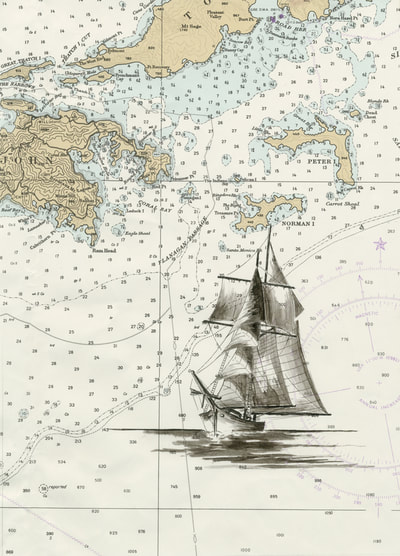
Moravians arrive on the Virgin Island | | Drawing by Bill Needs
Q. What drew you to the Moravian missionaries rather than remaining Lutheran?
A. The Christian faith was limited to the European settlers, therefore Africans, whether free or enslaved, were excluded from attending church. Moravian attitudes toward Africans were different from other Europeans. When they spoke to us they seemed to use simple understandable terms to describe their faith. They talked to us as if we were people, not livestock which existed only to work fields and mines. They treated us as though we mattered, unlike other European settlers.
I first met Brother Freidrich Martin soon after he arrived on St. Thomas in 1736. He was one of the first ordained pastors from the Moravian Church in Herrnhut. He said he had heard of my witness among the slaves. He told me the Moravian Church encouraged and empowered women preachers. Reassured by his words, our relationship grew. I taught him my Creole language and I learned his German. I took him along with me to “The Path” realizing many slave owners opposed Moravians visiting slaves in their own quarters, fearing they might stir up trouble among the workers.
Actually, the first missionaries here were not much more than eager Sunday School teachers. Without the proper credentials, they were not allowed to baptize, marry, or bury converts. I found these rules strange, especially since the King had approved their work here. Nevertheless, the arrival of Brother Martin marked one of the first ordained pastors who could legitimately carry out these religious rituals among slaves.
Q. You were baptized Catholic, learned Christianity from the Calvinists, then found these lessons enhanced by Moravians. Did that sequence of experiences lead you to assist to the Moravian mission?
A. Brother Martin was very supportive of my enthusiasm. He seemed impressed with my ability to learn quickly and effectively convey what I learned. Our meeting did indeed bring together meaning from my diverse encounters with Christianity. I was reassured when he told me I could become “very accomplished in the teaching of God.”
I enjoyed the challenge of learning new languages. For example, by the time I turned 18 I was fluent in Danish, English, Dutch, German, Creole, and numerous African dialects despite having no formal education. In the years that followed I believe my mixed-heritage (African, enslaved then freed), my skin color, my devotion to spreading the word of God with as much fervor as any white man, and the ease with which I was able to converse in different languages became God’s tool.
The Danish West Indies was the first independent foreign mission station established by European protestants. I’ve been told my assistance helped make this Moravian mission successful.
Q. So it seems you had unique qualities to further this ministry. Is that an accurate understanding?
A. As unlikely as it seems, the Lord used my unique qualities to propel me throughout life to carry His message, as I understand it, among my people and even among Europeans. Besides acting as a translator, I was able to shed light on cultural differences.
For example, in the culture of many African tribes, the matriarch plays a much bigger role as a maker of decisions that will affect descendants. This was a difficult concept for those raised in European cultures to grasp, but it was familiar to me. Because I respected this aspect of African culture, because I could speak the languages required and because of my gender, I was successful in converting hundreds of African women and men, all enslaved.
Let me add that I think I was successful in teaching the white German men how to carry out their ministry by simply treating the Africans with respect and dignity despite their enslaved condition of life and spirit. For me, this became the right place and time for me to influence the Moravian Church in their mission as well as to contribute to founding a movement for African Protestant churches on the islands and ultimately in the American South.
Q. Did you encounter any difficulty in teaching Christianity to the enslaved? I mean, doesn’t there seem to be an obvious contradiction in the message of redemption for the slave and the same message to the slaveholder?
A. Ah, the message of equality for all found in the message of Christ can’t be overlooked, can it? But neither can the reality, also endorsed in the Bible, that there will always be rulers and those who are oppressed.
Moravians taught me to believe that Christ’s message of hope and redemption was meant especially for me and, by extension, for those of my race and my gender, at this time in history. The master and the slave was a reality in my time and any attempt to overturn that reality would result in banishing those who carried this message especially for us. Slaves were looked upon by the commercial enterprise as farm equipment. Any idea of “liberation theology” was completely at odds with the enterprise of running a successful farm-business. Moravian missionaries were caught in an awkward position which, while obvious to European colonists and African slave laborers, was silently ignored for the time. If there was a plan to resolve this contradiction it would have to be handled by future generations.
Q. You offer an interesting perspective that I had not considered. Would you explain more about the reach of your influence from this historical setting?
A. The influence of my gifts would probably have been limited to slaves of the Caribbean had I not consented to an arranged marriage to Matthaus Freundlich in 1739. Brother Freundlich was a white Moravian missionary and our daughter was born a year later. Despite starting a family I remained active in my own ministry. My actions seemed to ignite disapproval among slave owners, already suspicious of my influence. I looked like a slave but did not talk or act like one.
Eventually, I was charged for blasphemy, for recruiting converts to incite rebellion among slaves, and for having entered into an illegal interracial marriage. Colonial authorities imprisoned me for nine months. Other Moravian missionaries were also charged and imprisoned as “accomplices.” Fortunately, Count Zinzendorf happened to pass through St. John in 1741 en route to America. He was able to negotiate our release, conditional to my leaving the islands.
In 1742 I left St. Thomas with my family, Brother Martin, and several Moravian missionaries, never to return. Our destination was Herrnhut by way of Amsterdam. I was 24 and, while disappointed to leave the islands I was also excited to share this adventure with my family. That elation would not last.
Arriving in Amsterdam, Brother Martin, received word that his replacement in the islands had died and he had to return to St. Thomas immediately. He was a dear friend and we had shared extensive development of the Moravian mission for 6 years. I hated to lose his close acquaintance.
Then my husband became ill. While other travelers went on, I remained in Amsterdam nursing him until he died. Following his death, newfound friends directed me and my daughter across the foreign land to the sanctuary and spiritual familiarity of Herrnhag, Germany.
Two years later, my daughter died. I was 26 years and had lost the last emotional contact with my previous life. Moving into the Widows’ House in Herrnhaag, the Widow’s Choir provided me the unique support only they could understand. I busied myself doing what I knew best. I became a contributing member of the Moravian community and assumed leadership in the Women’s Choir where I remained until moving on to Herrnhut in 1751.
Q. Even in the Moravian communities, you made your contribution. Were you not slowed down by this major shift in cultures?
A. Remember, I was fluent in many different languages and accustomed to easily adjusting to diverse cultures found in the West Indies. Despite my origin and appearance as an African slave, the quality of my speech and my conviction to spread God’s love was as genuine as any German Herrnhuter. Although there is no record of my input or personal encounters with Zinzendorf, Sister Anna, or “Brother Joseph” Spangenberg, I do hope the evangelical technique I introduced along “The Path” in St. John (i.e. embedding myself into the African slave population) proved useful for future missionaries.
At any rate, my service to the Lord’s work must have been recognized. In 1746, I was honored to be ordained a deaconess for the Unitas Fratrum. This came only a couple of weeks after my marriage to Christian Protten.
Q. Oh, another life-changing event?
A. Yes as a matter of fact. I met Brother Protten in Herrnhut. He was born on the Gold Coast of Africa and, like me, he was also the product of mixed race. His father was a Danish soldier stationed at the Christianborg Fort garrison; his mother the daughter of a tribal chief and a Togolese Princess.
He described his childhood with some displeasure. He was tutored by a Lutheran pastor who encouraged his being sent away from his home at age 11 to be schooled in Copenhagen, against his wishes and those of his tribal family.
His European education prepared him for a career of teaching and Christian ministry. Upon graduation in 1735 he became involved with the Moravians and lived in Herrnhut off and on while Count Zinzendorf was in exile. He described this time as tormenting, seldom peace-filled because Germans ridiculed him about his ethnic background. I imagine this treatment might have developed in him a defensive manner that even Zinzendorf later described as “conceited.”
Nevertheless, Moravian Elders assigned him to establish a school for Euro-African children back on the Gold Coast, a job at which he was only partially successful for numerous reasons. I was living in Herrnhaag when he returned. We became acquainted and married in 1746 with my full understanding of his feeling homesick and continued yearning to return to the Gold Coast.
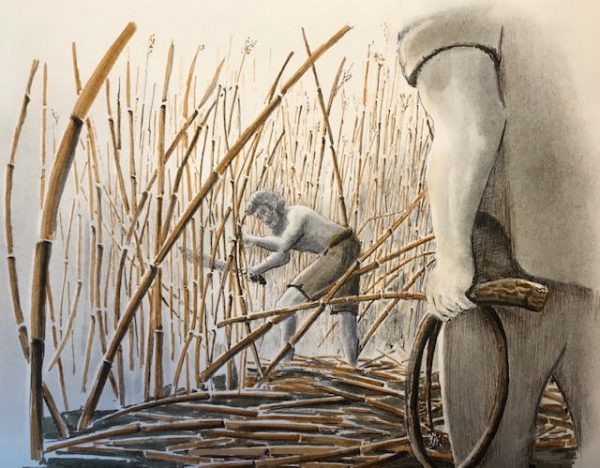
Birth of a Nation | | Drawing by Bill Needs
Q. So you, formerly a slave, it seems you were destined to follow the slave trade route in reverse. Is there more?
A. Indeed there is. Marriage to Brother Christian was rocky. Even Zinzendorf, in returning to Herrnhut from his exile, seemed irritated by my husband and claimed he had a haughty disposition and prone to alcoholism. Constant bickering ended with us being expelled from Herrnhut in 1756.
In time the friction eased. Moravian Elders concluded he was the best-qualified educator and called for his return to the Gold Coast. He accepted the calling but declined my joining him in Christianborg until 1763.
The Gold Coast of Africa was not an easy assignment. Christianborg was a “shipping terminal” where captured Africans were warehoused before being sent to the colonies for a life of slavery. Remember, my own mother passed through these gates 50 years earlier.
Although my husband and I both spoke Danish, you can imagine the turmoil we encountered as a mixed-race couple trying to evangelize either the terrorized African or the domineering European. Ultimately we dedicated the remaining years of our lives to teach African children.
I spent 17 years of my life on the Gold Coast of Africa. I outlived my husband and continued his ministry educating African children, introducing Africans and Europeans to the love of Christ to whatever degree they were prepared to receive in, and hopefully revealing the message of salvation and redemption.
Q. It appears that you left quite a legacy for the Moravian Church and the world. Is that right?
A. Looking back on my life, I hope I’m seen as a servant obedient to her calling, adept at negotiating life’s possibilities, resourceful in any setting using any language, and determined to speak about what I regard as the Bible’s liberating grace to me and to people of African descent.
My name may not be well known. Neither is the name “Moravian Church.” But I hope the emergence and continuation of each black church — “church” being an anchor of community life, an advocate for social justice, and a midwife to spirituals and gospel music — might be remembered as originating from when I walked and talked on “The Path.” I hope I will be remembered as one who helped introduce a new kind of religion that, for future generations, would transcend the contradictions of man by offering the love of Jesus equally to those in need.
The impact of Rebecca Protten reaches far beyond the Moravian Church. To some, she is regarded as the Mother of Foreign Missions. For the abolitionist and freed slave Olaudah Equiano, she “became an exemplar of using Christian mission as a tool for emancipation of African peoples” on three continents.
Her story illuminates the early products of Moravian missions. Sister Rebecca is common in the fact that she eagerly shared her Christian convictions among her own people. She was also exceptional in her ability to discern opportunity and use her God-given talents, despite obstacles, to transcend cultures.
One must remember, the emergence of Moravian missions did not occur in a historical vacuum. This was a time when a great spiritual awakening was occurring across Europe and extending into undiscovered parts of the world. Moravian societies, Moravian missions, even Zinzendorf’s “Pilgrim Congregation in Exile” were only part of the creative tools God used to communicate his love to mankind.
To continue that thought, we have coffee on December 26 with John Wesley who connects the emergence of the Methodist Church to the emergence of Moravians on the continent of North America.
__________________________
About the Author

Photo courtesy of Bill Needs.
Raised in the Moravian Church in Dover Ohio, Bill graduated from Moravian College in 1962. A drop-out of Moravian Theological Seminary, Bill now lives with his wife, Sara in Marietta, Georgia. Bill’s career served disabled individuals and employers in providing realistic vocational choices as a Vocational Rehabilitation Counselor. After retirement in 2004, Bill discovered he had a previously unknown artistic talent for drawing. Now, when Bill and Sara travel, he supplements his photography record with art inspired by the scenes and experiences. For more art, visit Bill’s website at BillNeeds.com. For discussion about art or blog content, email [email protected].
Requests for republishing, click here.
Want to volunteer to write for us? Click here.
